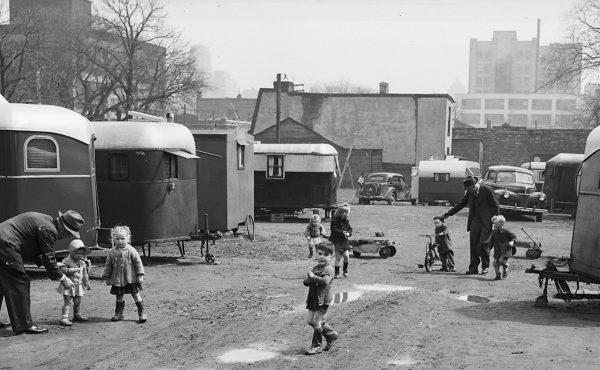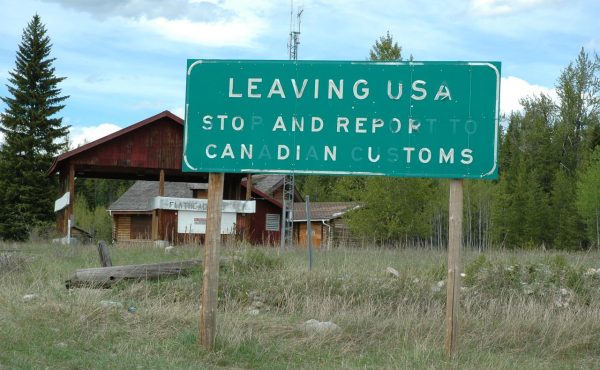

When Giorgio Mammolitti mused last week that council should turn to public-private partnerships to develop new arenas, he was, I’m guessing, thinking about arrangements in which the City antes up the land while some private entity emerges with not just project financing, but also advertising and long-term tenancy agreements that produce enough revenue to make the whole effort turn a profit.
In other words, we end up with over-designed mega-facilities equipped with generous stands, perhaps a Tim’s franchise, auctioned-off naming rights, ads on the boards, and other revenue-producing amenities. The target market: competitive hockey league teams where the parents are willing to shell out serious green for ice time, as well as rental arrangements with private figure skating and hockey camps.
The result: the Lakeshore Lion’s Mastercard Centre for Hockey Excellence.
In principle, I don’t have a problem with the notion of using private capital to build rinks — after all, the City certainly doesn’t seem capable of doing it. But my question is whether we necessarily need to go the corporate route described above.
Put another way, could the City envision an arena version of the Wychwood Barns, which, dare I say it, is a Triple-P project that progressives love to, well, love.
Jutta Mason, are you listening?
Let’s pause here to consider the case of some of Toronto’s arena boards of management, which operate at an arm’s length from the City. Amazingly, they collectively turned a very small profit ($3,000) for the City in fiscal 2009, generating precisely enough operating revenue to cover their costs as well as their routine capital outlays. The mortgages were paid off years ago.
The arena I use regularly — Bill Bolton, in Seaton Village — is an amazing place. The coffee in the snack bar is $1.25 for a large, and you can get a decent stick in the pro shop for $30. The arena operates both, as well as the highly affordable programs geared to skaters and hockey players of all ages and both genders. In 2009, Bolton’s expenditures totaled $776,700 and its revenues came in at $777,000.
Despite its popularity, Bolton has no parking lot, no stands, no advertising, a cramped ice surface and tiny dressing rooms. Anyone proposing such a facility in 2010 would be laughed out of City Hall. And yet it works.
The point is that if the City does pursue a Triple-P strategy for arena development, the rules shouldn’t be narrowly cast to cater only to for-profit partners who need a 10% or 15% return on investment and will thus be looking to sell naming rights, build multi-pad facilities, and sign up franchised concessions.
Rather, it’s entirely possible that community groups might come forward with more modest proposals designed to meet local needs instead of some investor’s margins. Again, the Wychwood Barns model is worth exploring: not-for-profit tenants, multiple-uses, donations to help cover capital costs, City land, even unconventional financing. What if some enterprising community organizer decided to sell shares in a local arena project to raise capital instead of traipsing off to the bank for a commercial loan? Or partner with a school board? And what about much more small-scale outdoor rinks equipped with compressors and a small club house? Will the City be willing to entertain community proposals to develop those?
Ultimately, council needs to keep the goal clear: such partnerships are a means to an end, not an end unto themselves. It’s not just about that second P.
Photo by Nedra




8 comments
The fact is Bill Bolton arena would not have a balanced operating budget if the capital costs were included. Pointing out that it has a balanced operating budget is not helpful in the decision making process for new arenas.
Personally, I don’t believe that the city should be involved in arena construction. The city should offer long term contracts to buy ice time from private arenas.
Hockey rinks have huge potential to draw people and are fantastic at livening up a space. Could hockey rinks be built into density bonusing agreements for large projects with the caveat that certain amounts of time go to affordable junior leagues? Developers would receive a benefit from having this amenity any way. I’m thinking of the arena which was built into the Cambridge Centre Mall expansion a few years in Cambridge, ON. When I visited a junior team was practicing on the surface while people lingered around casually watching. Situated adjacent to the food court, the mall owner receives the added benefit drawing increased traffic to the food court in people who come for the atmosphere.
Lorinc is right. We need lots of small/community rinks and just a few big fancy ones.
Another option is what was done at Park Lawn rink in Etobicoke. In the fall a bubble is erected over the rink thus allowing for an extended season (as compared to that for a typical outdoor artificial ice rink.)
Stop calling them hockey rinks, they are for figure skating and pleasure skating too.
Partnering with local non-profits is a great way to deliver small scale municipal infrastructure like arenas – as long as the non-profit is well run, accountable and arm’s length. For profit money is unusually only interested in big ticket stuff like roads or hospitals and even there the procurement process, if it is to be done right is a nightmare. There’s lots of opportunities for the City to work with non-profits for recreation, parks and even housing, and a chance to use surplus city land for at least semi-public uses. What would be even better is to get some cheap long term financing from the province as well such as OSIFA though I don’t know whether this still exists.
It seems to me that leadership in most western societies has caved in to the most callous and selfish me-first values, glorifying rapacious profit seeking behaviour in every contact between people with expertise and the collective welfare.
The state used to be seen as a reliable repository of honest effort and was trusted as such. The new view that government is not only ‘a’ but ‘the’ problem has spawned all sorts of corporate entities which own more and more of our infrastructure. They tax us to suit themselves without public transparency rather than putting public profit first. It is more than the death of noblesse oblige. It is the death of the soul of any society. All public enterprise is threatened by this value system. But so is all small enterprise. Prepare to serve your new corporate masters. As for ice rinks for the Kids or hospitals or sewers or police and firemen – just hope that the Goldman-Sacks of the world and the SNC’s of Canada find it in their interests to continue those parts of the culture.
Michael Fish, Longueuil, QC
Woulda, shoulda, coulda, John.
I agree with your basic premise — that the city should be building rinks, that the current model of rink operation and governance (e.g. Bill Bolton Arena) works, and that those rinks don’t all have to be million-dollar palaces. If the City really wanted to improve access to ice rinks, it could simply cover over all those little outdoor pads dotted around city parks. Scadding Court, south end of Regent Park, Monarch Park, Greenwood Park, etc. Or at least insofar as the community wanted their local pad to be covered over and its management (and bookings) formalized. I couldn’t see it happening at Dufferin Grove, for instance.
And if they don’t have parking lots attached to them, so what? They could be covered over for a fraction of the cost of building a new rink. And they are already in the middle of dense, underserved residential neighbourhoods with few other options for building.
After all that’s all that Scarborough did in the 60s — they built a bunch of outdoor pads in parks, and then built on that basis incrementally. A few years after constructing the pads, they built tin-shed roofs over the pads. Then five or ten years later they built dressing rooms so that the kids didn’t have to dress in one big swimming change room. Then the city glommed larger community centres onto the rinks, with more facilities so that kids who played hockey were not the only kids with something to do on weekends.
If we were to use the Scarborough example, we might also propose the “Scarborough Triple-P”: Public-Public Partnerships. Scarborough did not have many (perhaps any?!) “community centres”. But it had loads of high schools with plush gyms and pools. And Parks and Rec could rent the gyms from the Board of Ed for a very cheap rate on evenings and weekends. But that cannot happen anymore because (and I would happily be contradicted on this) Harris-era policies insist that school boards charge full market rates to rent out their facilities, regardless of whether they are renting to Parks and Rec, the Brownies, a daycare, or some other organization.
As regards your “Bill Bolton” solution, it seems like a sensible and economical solution, John. And you are right to propose it.
But you are replaying last week’s game in your head. The election was last October. And pragmatism lost; right-wing ideology won. The people who might have been receptive to this kind of solution are in the descendent. And the people with a doctrinaire commitment to private sector involvement in everything are in the ascendent. Your article is “a day late and a dollar short”.